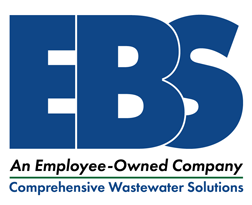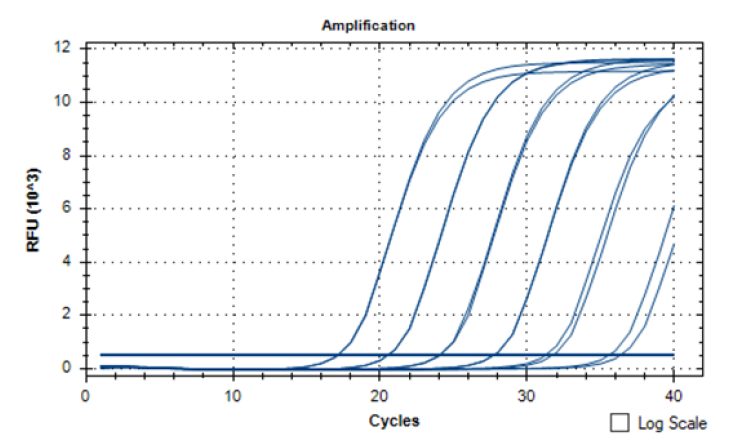Laboratory Services
EBS wastewater laboratory specialists and microbiologists utilize a breadth of approaches, including both established and cutting-edge laboratory techniques, to provide direct support to clients, third-party consultants/engineers/vendors, and our field personnel. We continually research and evaluate new equipment, advanced microscopic techniques, and chemical analyses to address system parameters and biology to gain a deeper understanding of the biological process at work.

Advanced Analytical Laboratory
Industry Specific Suites
Pulp and Paper
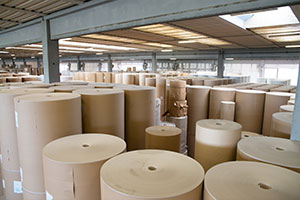
Food and Beverage
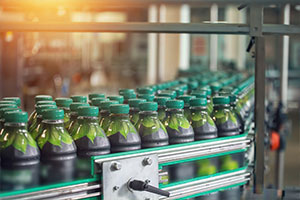
Petrochemical
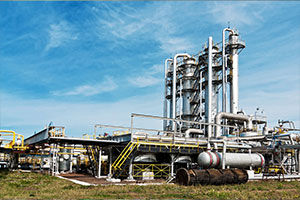
Specific groups of toxic and inhibitory compounds
Sometimes a narrow focus is required to pinpoint the compound(s) of concern. By combining gas chromatography (GC) with high-performance liquid chromatography (HPLC), we can test for virtually any family of compounds. Whether it’s a biocide used in the production process, cleaning and sanitization chemicals, or simply naturally occurring by-products of production, a wide array of potential contaminants can enter a wastewater treatment plant. The specific families of compounds we test for include:
- Anionic and nonionic surfactants
- Biocides and peracetic acid
- Long chain fatty acids
- Odor causing compounds
- Quaternary Ammonium Compounds (QUATs)
- Reduced Sulfur compounds
- Resin Acids
- Terpenes
- Volatile organic acids
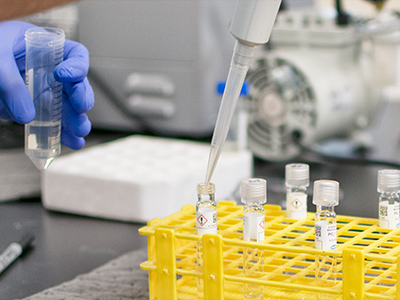
Heavy Metals
Industrial wastewater is susceptible to contamination from heavy metals which can have significant deleterious effects. Additionally, some treatment systems such as anaerobic digesters, rely on trace micronutrients available to support the biomass. Too much or too little of a specific metal can cause problems. EBS employs Inductively Coupled Argon Plasma (ICAP) to test for all heavy metals or trace micronutrients. Metals included:
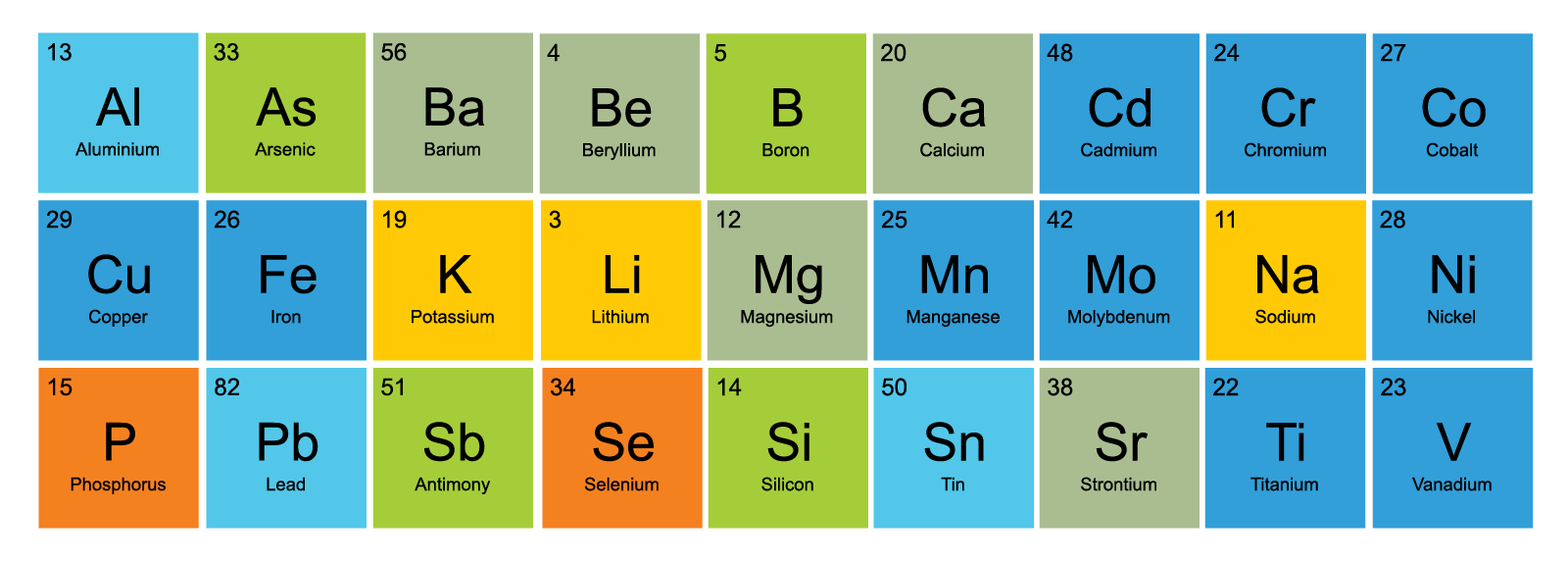
Priority Pollutants by Gas Chromatography-Mass Spectrometry (GC-MS)
Gas chromatography coupled with mass spectrometry allows for maximum accuracy in determining concentrations of both known and unknown compounds. By breaking a chemical compound into ionized fragments and identifying their molecular weights, the onboard library of the GC-MS can match thousands of chemicals.
The technology can be used to:
- Scan for unknown compounds
- Identify a specific compound
- Base neutral extraction
- Acid neutral extraction

Treatability Laboratory
Treatability testing is an extremely important resource for optimizing wastewater treatment. The first major function of treatability testing is to assess whether a wastewater stream is amenable to a particular series of treatments to achieve the desired effluent quality. The second is to assess the potentially deleterious impact that process changes or chemical contaminants will have on the existing wastewater treatment system. EBS also has the capability to perform countless other valuable methods for applying treatability studies.
Inhibition Assessments
The addition of a new process or simply introducing a new waste stream into a treatment system can cause unknown complications. Prior to implementing a change, testing should be carried out to determine the potential impacts. By using closed system respirometry, different dosages of the chemical or waste stream of concern can be added to healthy biomass, tested, and impacts measured.
Biodegradability Studies
Understanding how biodegradable a waste stream is aids in determining the most effective treatment options. Using closed system respirometers, a biodegradability study focuses on cumulative oxygen uptake over time. This allows for the determination of how biodegradable a substrate is as well as how much treatment time is needed.
Nitrification Inhibition Assessments
Biological ammonia removal through nitrification can be a tricky process to establish and stabilize in a wastewater treatment system. The bacteria responsible for nitrification are more susceptible to changes in environmental conditions and inhibitory substances than heterotrophic. EBS has the capabilities to determine if loss of nitrification is because of inhibition to the ammonia-oxidizing bacteria, the nitrite-oxidizing bacteria, or both. We can also study whether nitrifier bioaugmentation may help the problem or if environmental conditions are not conducive to a nitrifying population of bacteria.
Advanced Oxidation Processes (AOP)
Advanced oxidation processes are typically used either as a pretreatment to make wastewater more biodegradable or as a tertiary treatment for removing recalcitrant COD. Depending on the wastewater characteristics, flow rates, and contaminants to be removed, a number of options can be screened and tested in our laboratory. Available testing includes:
- Chlorination
- Fenton’s reaction
- Ozone
- Peroxide
- UV
Bench-scale Reactors
Chronic inhibition assessments and most scale-up kinetic data can only be determined through the operation of continuous flow bench-scale reactors. EBS can operate bench-scale reactors to simulate an activated sludge or aerated lagoon system to study the effects of process changes, new waste streams, or for use in a new wastewater treatment plant model/design.
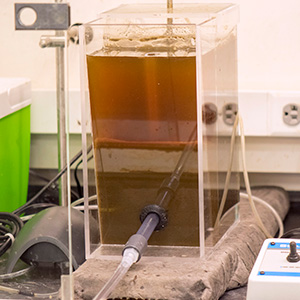
Microtox Acute Toxicity Testing
A rapid acute toxicity test, Microtox uses bioluminescent bacteria to determine the effect that a sample has on test organisms. A decrease in light output by the bacteria corresponds to a toxic percent effect from the sample. Microtox results have been correlated to WET (Whole Effluent Testing) testing results in many systems and can be used as a leading indicator of possible WET test issues. Microtox can also be used to pinpoint sources of toxicity/inhibition coming into a wastewater treatment plant’s biological system.
Other customizable treatability studies include:
- Bioaugmentations studies
- Jar Testing
- Nutrient Evaluations
- Temperature/pH studies

Microbiology and Wet Chemistry Laboratory
Microbiology testing provides a wealth of valuable information about biomass health. When combined with wet chemistry tests like BOD and TSS, an even greater understanding is achieved. Our microbiology and wet chemistry laboratories work in tandem to weave together the data generated, providing a complete, top to bottom understanding of the health of your wastewater treatment system.
Microbiological Examination
Microscopic exams are one of the most important diagnostic tools available for understanding the health of your biomass. By assessing floc structure and size, the impact on settleability can be better understood. Utilizing India Ink stain for evaluating polysaccharide and zoogloeal bacteria levels is also critical. Other important parameters include filamentous bacteria abundance, dispersed bacteria, and pin floc ratings, and the amount of higher life forms present. By providing complete, in-depth microscopic exams on wastewater samples from various industries and across the country, our microbiologists have a wide depth of experience to draw from when assessing biomass health.
Filamentous Bacteria Identification
Filamentous bacteria can be beneficial in small amounts, but when present in abundance they can severely impact sludge settleability. Using the semiquantitative scale to rate abundance can give you a complete understanding of your system. Our microbiologists are fully trained and experienced in identifying each specific type of filament present in a sample. By combining the abundance, the type, and the associated causes, we provide customers with the information they need to make corrective actions.
Total and Live Bacterial Cell Counts
Understanding the volume of bacteria in your wastewater treatment system can be a useful tool for assessing performance. Knowing what portion of these bacteria are alive is even more critical. EBS utilizes flow cytometry, a technology used for years in the medical industry, to make bacterial cell counts. By combining specific nucleic acid stains and a dual laser system, we can quickly and accurately characterize the health of your wastewater.
Bioflocculation Potential
EBS has developed a unique suite of testing aimed at identifying the potential for your bacteria to form good, healthy and well-settling floc. This is done by combining testing for Exocellular Polymeric Substances (EPS), Surface Charge, and Hydrophobicity. EPS testing measures the volume of biopolymers (polysaccharides and proteins) secreted by the bacteria. These substances are essential for good floc formation, but when present in abundance they can lead to viscous bulking. Surface Charge measures the short-range, covalent charge of the biomass which is necessary to attract floc particles together to form larger pieces. Hydrophobicity measures the density or compactness of the floc. These 3 tests combined provide a complete flocculation profile
Nutrient Content in Biomass
A healthy balance of cellular nitrogen and phosphorus in the biomass is essential for maintaining adequate treatment. Sufficient nutrients need to be present to support new bacterial growth. By analyzing a filtered and unfiltered sample for both nitrogen and phosphorus, the nutrient amount in the biomass can be determined. Comparing these values to ideal ranges, EBS can determine if your biomass is nutrient deficient. Nutrient deficiency can lead to poor cell yield resulting in incomplete treatment or unwanted filamentous growth.
Traditional Wet Chemistry
Standard Methods for the Examination of Water and Wastewater is a modern staple in virtually all laboratories dealing with wastewater. EBS follows Standard Methods and performs virtually all common tests used for process control.
-
Ammonia
-
BOD
-
COD
-
Orthophosphate
-
Oxygen Uptake Rate
-
Sludge Settleability
-
Total Kjeldahl Nitrogen
-
TSS/VSS
Ion Chromatography
Nutrient residuals such as orthophosphate and nitrate are critical to understanding the health of a wastewater treatment system. Unfortunately, traditional colorimetric testing is often prone to significant interferences due to color bodies present in the water. Common interfering ions such as chloride can further impact result accuracy. Ion Chromatography offers an accurate solution to these problems. Our seven-anion suite includes:
- Fluoride
- Chloride
- Nitrite
- Bromide
- Nitrate
- Phosphate
- Sulfate

Fecal Source Tracking Laboratory
Recent trends indicate that fecal bacterial limits are being added to NPDES permits. Our lab has the capability to quantify fecal indicator bacteria (fecal coliform, E. coli, and Enterococci) using EPA-approved methods for wastewater. Our capabilities also include the use of DNA markers to identify the source of fecal bacteria.
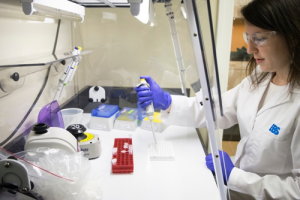
Fecal Indicator Bacteria Testing
Testing is conducted using IDEXX Laboratories defined substrate technologies to quantify concentrations of fecal indicator bacteria in wastewater treatment plant samples. This includes fecal coliform and E. coli (Colilert-18) and Enterococci (Enterolert)
